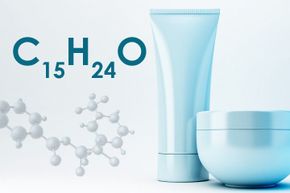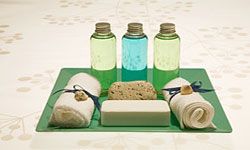When you buy a skin cleanser at the store, you probably don't think about how long it's been sitting on the shelf. But chances are it isn't straight from the factory. Instead, it's probably been there for months, and it might take you another couple of months to use it all. How can your skin cleanser sit around for so long without going bad?
Preservatives such as BHT, which stands for butylated hydroxytoluene, make this possible by helping products meet quality and safety standards. BHT is a yellowish-white, crystalline solid that companies use in everything from food to makeup to skin cleansers.
Advertisement
Just like food, skin cleansers decompose over time. The reason for this is oxidation, a process in which harmful molecules called free radicals cause damage to cells. It's the same process that's responsible for the rust on your car or the eventual brown color on a peeled apple. A skin cleanser can undergo oxidative stress, too, rendering it ineffective. To counteract this issue, cosmetics companies use BHT in skin cleansers. BHT has antioxidative properties, and it works to neutralize the oxidation process by taking on the stress caused by free radicals.
Although there is some debate about the safety of consuming BHT and its use in skin cleansers, both the Food and Drug Administration and the Cosmetic Ingredient Review have deemed it safe to use in low concentrations [source: Cosmetic Info]. In some cases, however, higher concentrations of BHT were basically toxic in rats, causing liver and kidney problems. Applying BHT to the rats' skin also affected lung function. Smaller amounts used in skin cleansers don't seem to have the same effect, though, and most cosmetic products use BHT at concentrations between 0.0002 percent and 0.5 percent [source: Lanigan].
See the links on the next page for more information on how BHT works in skin cleansers and other cosmetic products.
Advertisement


